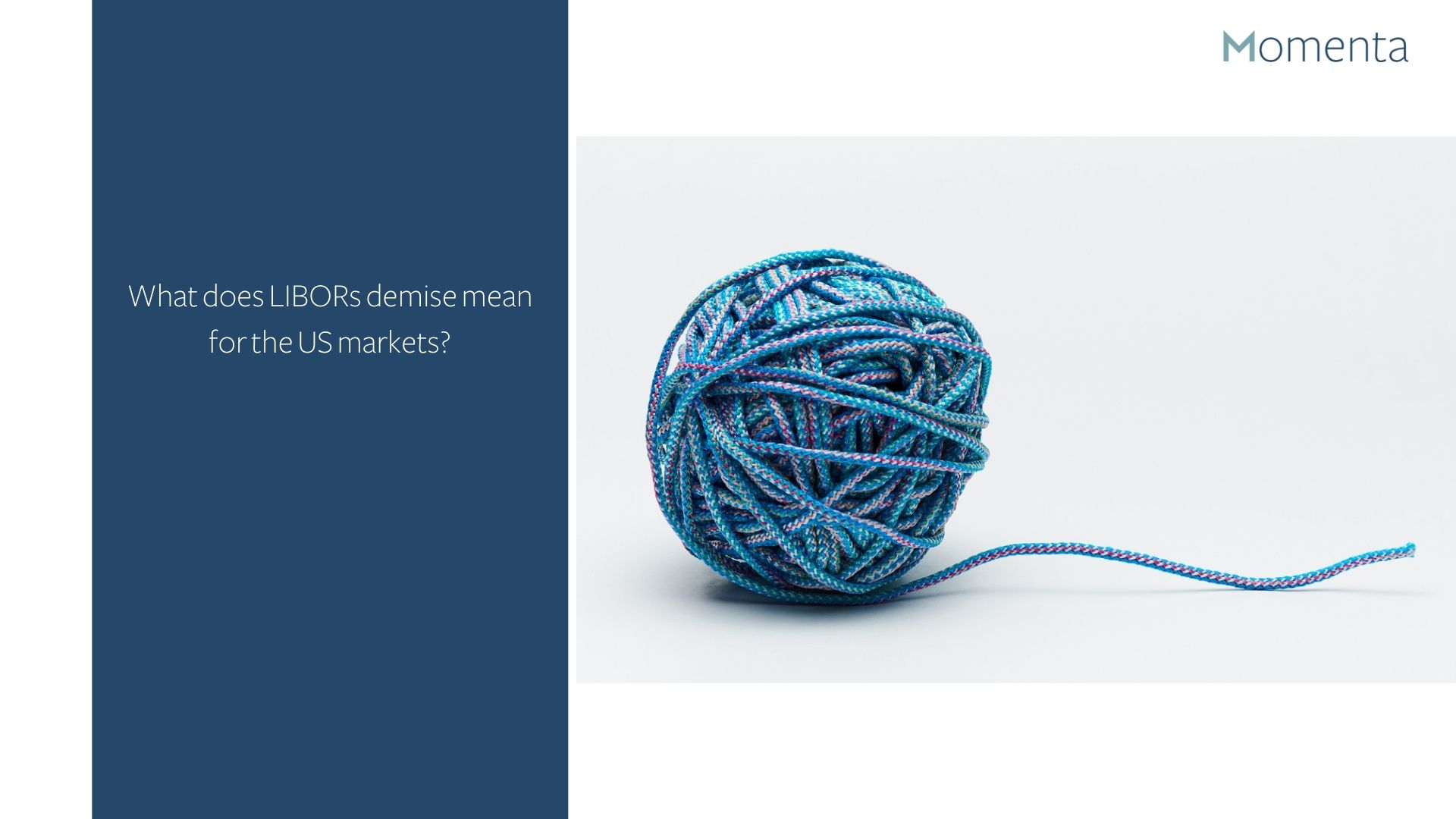What does LIBORs demise mean for the US markets?
Over 80% of trade and supply chain financing prices in the world are based on the London interbank offer rate (LIBOR) benchmarks in US dollars. Regulators have directed that LIBOR funding for new transactions must halt after December 31, 2021, when most LIBOR rates will no longer be published.
While the Intercontinental Exchange, which sets LIBOR, will continue to publish overnight 1, 3, 6, and 12-month LIBOR in dollars for legacy transactions until June 30, 2023, regulated institutions have been warned that any new instruments referencing LIBOR rather than the Secured Overnight Financing Rate (SOFR) will be unwelcome and subject to scrutiny.
What is the risk?
The demise of LIBOR has the potential to threaten global trade and supply chain finance at a time when central bankers in the United States, the United Kingdom, and the European Union claim that supply chain-driven inflation is just temporary and will return to normal by mid-2022. They may be harmed if the post-LIBOR transition to SOFR suffocates global trade finance, starting in January 2022.
Many fear that the market is simply not ready to act out a transition of this nature, whilst still dealing with the ramifications of the pandemic.
How does the transition impact your compliance function?
Trade spans international borders, necessitates sophisticated multi-party and multi-jurisdiction documentation, requires licences and adherence to complex domestic export and import, and borrows in foreign currencies from both domestic banks and corporate exporters.
For a diversified clientele in different jurisdictions, knowing your customer, anti-money laundering and counter-terrorism funding, anti-tax avoidance, and anti-bribery compliance standards are particularly difficult. As they digitised in 2020 during the pandemic, few banks prioritised modernising their trade finance operations above more profitable and less difficult market and credit activities.
Too few banks and exporting companies are prepared for the demise of LIBOR, and even fewer have trade finance documentation for other standards. Those banks undertaking the change are focusing on larger clients with trade deals worth more than $50 million, while neglecting many of their customers.
What of the regulators?
Many argue that regulators failed to realise the importance of forward-term SOFR rates for trade finance until it was too late. They were concerned that trading in term SOFR futures would reduce the liquidity of overnight SOFR and revive the risk of rate manipulation that had harmed LIBOR. Banks could calculate term rates for lending by looking backwards, compounding daily SOFR rates during the period to determine interest due at term, according to regulators.
The biggest issue with this is backwards-looking compounded rates have never been used by banks, and neither bank nor corporate treasury systems enable backwards-looking loan pricing or credit modelling. Corporate borrowers want the security of a fixed rate loan.
Even though many are quick to question the long-term vision of what the regulators have released, they have been active in ensuring that enough support has been given. The latest to be released is the update of regulatory guidelines provided in October 2021 and initially in November 2020.
In December 2021 the Federal Reserve released the “Supervision FAQs on the Transition away from LIBOR,”. The FAQs include, among other things, definitions of what constitutes a “new contract” for the purposes of the previously issued guidance, particularly for (1) modifications to adjustable-rate mortgages; (2) loans that “automatically renew” after 2021; and (3) physical settlement of contracts prior to 2022. (e.g., swaptions).
The FAQs also address firms’ capacity to trade LIBOR-linked instruments on the secondary market before 2022, the necessity for backup language in contracts established before 2022, and examiners’ methodology to evaluating firms’ LIBOR transition measures.
Is the path clear or can we expect a bumpy ride?
In truth, the outlook is still largely unknown. As SOFR is a risk-free rate, a ‘credit spread adjustment’ is required for a LIBOR-like benchmark, along with a negotiated margin to account for borrower-specific risk. A greater negotiated margin over SOFR than borrowers are used to seeing with LIBOR is an option. Credit spread modifications that increase with tenure have been pushed by lending instrument investors, adding to the complexity.
What of the other benchmarks?
The American Financial Exchange’s Ameribor, Bloomberg’s BSBY, and ICE’s Bank Yield Index are all competing to establish a credit-sensitive, post-LIBOR benchmark. Because SOFR is a risk-free rate, a ‘credit spread adjustment’ is required for a LIBOR-like benchmark, along with a negotiated margin to account for borrower-specific risk. A greater negotiated margin over SOFR than borrowers are used to seeing with LIBOR is an option. Credit spread modifications that increase with tenure have also been pushed by lending instrument investors, adding to the complexity.
What does the future look like post cessation?
Failure to maintain normal levels of trade financing in 2022 could worsen the supply chain issue and severely damage the global economy. Higher and longer-lasting global inflation, lower economic growth, and a weaker and more unstable post-pandemic recovery are all dangers. As with every financial shock, weaker emerging markets, developing economies, and smaller businesses will be pushed to the margins and bear the brunt of the consequences.
How can Momenta help you?
Momenta are a global contingent resource solutions firm, and for over 30 years we have been partnering with companies in the financial services, legal, technology, and training and development sectors to cost effectively provide the right people, with the right skills, at exactly the right time.
Momenta will provide you with additional resource for the relevant key areas of the LIBOR transition process, allowing you to focus on the strategic oversight of the project while we help to implement your vision.
This flexibility allows you to ensure that there is always the right balance to your team, delivering a far more effective solution that will benefit the results delivered to your client
Momenta also specialises in scaling resource requirements up and down during the lifetime of a project to meet all key requirements, whilst helping to maintain cost control in resource delivery capacity and capability.
Given the mammoth task ahead for U.S businesses in the LIBOR transition process, Momenta can provide fully built teams to support in all key disciplines, including:
- Identifying the contracts that need to be swapped
- Re-papering according to an appropriate index rate
- Reviewing fallback language
- Calculating the fluctuated pricing with each contract due to the new IBOR attached to any calculation or swap
- Contract negotiation and review
- Communications to the end customer regarding their new rates
Additional skilled and experienced resource will help you to avoid wasted time and help your clients transition their contracts to a new index on-time, efficiently, and effectively.

